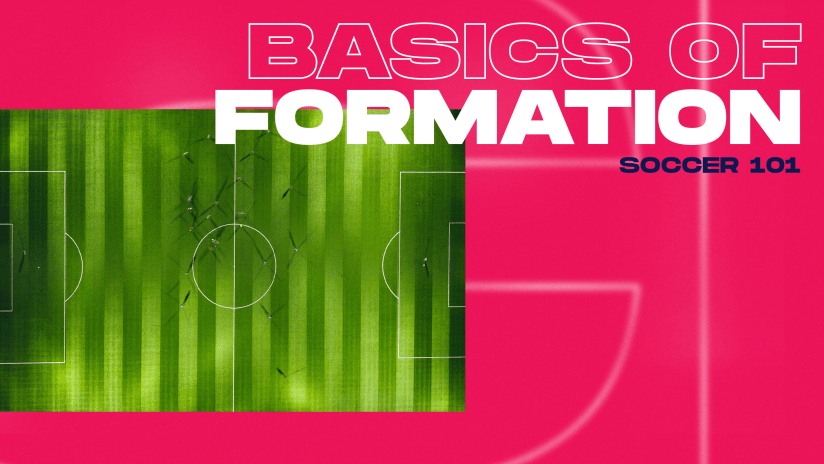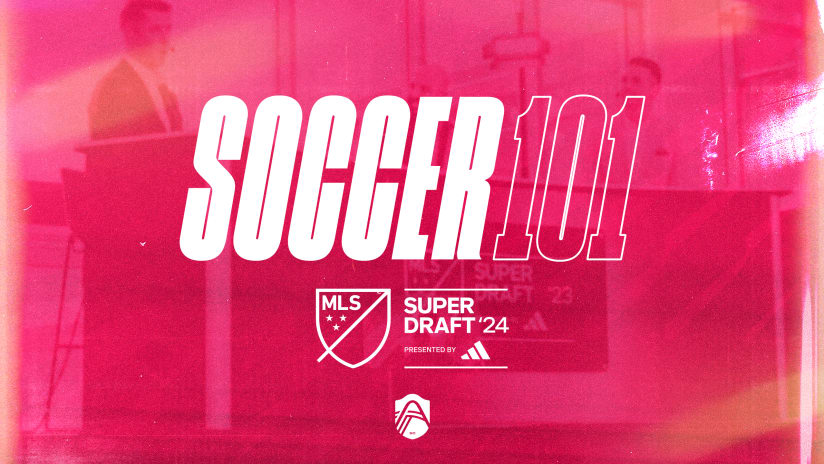Written by Zach Lowy | Co-founder & Lead Writer at BreakingTheLines.com
Whether you call it football or soccer, the beautiful game or ‘o Jogo bonito,’ one thing’s for sure: soccer is the most popular, widely played, and widely viewed sport in the entire world. As the United States prepares to host the 2026 FIFA World Cup alongside Canada and Mexico, knowing the basics of soccer and its various formations is key to understanding and getting hooked on the sport.
Unlike American football and baseball, where the defense and offense rotate shifts depending on the phase of the game, players of the two teams competing in a soccer match remain on the pitch throughout both of the 45-minute halves, including a determining extra time which is tacked on by the referee at the end of each half to compensate for interruptions. Each manager must select a starting line-up before the match that is composed of 11 players, although a team may drop to 10 or fewer if one receives a red card or two yellow cards, which are administered by referees for aggressive fouls, violent conduct, and some other offenses.
There are countless ways the manager can divide these 11 slots, but one guaranteed player for every team is the goalkeeper, the only player on the pitch who can touch the ball with their hands (as long as it is within the 18-yard penalty box). Along with protective gloves, the goalkeeper wears a different color kit that is distinguishable from the other players.
The 10 players not in goal are referred to as ‘outfield players’ and their configuration on the pitch is referred to as a formation. For example, one of the most common formations in soccer is a 4-4-2, with four defenders, four midfielders, and two attackers; note that the total sum of the formation is always 10 as it is automatically implied that the goalkeeper will start. A manager who is looking to play more of a defensive approach and close space in the central areas of the pitch may instead sacrifice a striker for an extra midfielder, effectively playing a 4-5-1.
Managers pick their formations based on what strategy best suits their players as well as what can effectively combat the strengths of the opposing team. Another traditional formation is the 4-3-3, which fields four defenders (two fullbacks who play on either flank and two central defenders), three central midfielders (one defensive midfielder and two midfielders playing in more advanced positions), and three forwards (one central forward and two wingers playing on either flank).
However, not every manager will set up with a flat back four; some coaches instead elect for a “back three” or a “back five”. A back three consists of three central defenders while a back five is three central defenders and two wing-backs playing deep on both flanks to help out defensively. U.S. men’s national team manager Gregg Berhalter has typically gone with a 4-3-3 formation during his time in charge, but he has occasionally used a back three such as in the inaugural CONCACAF Nations League Final on June 6, 2021. With Mark McKenzie, John Brooks, and Tim Ream playing as the three center-backs and DeAndre Yedlin and Sergiño Dest operating as wing-backs, the U.S. defeated Mexico in a thrilling extra-time battle.
Knowing which players to substitute and whether or not to switch formations plays a crucial role in a coach’s in-game management ability. For example, when a team is winning and seeks to protect its lead, the manager may choose to “park the bus” and switch out various attacking players on the pitch for defensive-minded players on the bench in an attempt to put more bodies behind the ball, cede possession to the opponent, and soak up pressure. This strategy can have adverse effects, however. In his recent victory against Bordeaux, Paris Saint-Germain manager Mauricio Pochettino chose to bring on defensive midfielders Danilo Pereira and Idrissa Gana Gueye in substitution for attacking midfielders Éric Junior Dina Ebimbe and Julian Draxler. Rather than shoring up the defense and maintaining control of the match, PSG gave up six shots and two late goals in a nervy 3-2 win. As the saying goes, sometimes attack is the best form of defense.
Interestingly, the early formations of soccer typically saw a higher proportion of forwards, demonstrating the all-attacking nature of the game during its embryonic stages. When England played Scotland in the first-ever international match on November 30, 1872, the English went with a 1-1-8 or a 1-2-7 formation while Scotland set up in a 2-2-6. Despite the attack-minded ambitions of both managers, the match ended in a 0-0 draw, but the fact that England would often switch between two formations reflects a style of play that is echoed today.
Teams often set up in different formations for different phases of play. For example, a team that opts for a 3-5-2 formation in possession may switch to a 5-3-2 formation out of possession, while a team that sets up in a 4-4-2 formation on the ball may switch to a 4-5-1 after losing possession so its striker can drop back to help defensively. Knowing which formation to play is crucial in a manager’s mission of getting the most out of their players and limiting the opponent’s strengths, but it is equally important to know how and when to switch the formation in order to meet the circumstances of the game and fulfill the objectives.





